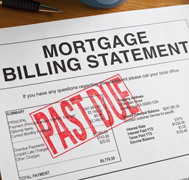 In today’s Canadian housing market, it’s more possible than ever that you may have to take mortgage enforcement remedies. With increasing interest rates and high Canadian household debt, some Canadians might be having trouble meeting their mortgage payments, or their other debts may be too excessive, so they don’t have enough funds to make ends meet.
In today’s Canadian housing market, it’s more possible than ever that you may have to take mortgage enforcement remedies. With increasing interest rates and high Canadian household debt, some Canadians might be having trouble meeting their mortgage payments, or their other debts may be too excessive, so they don’t have enough funds to make ends meet.
The new Canadian mortgage rules are requiring mortgage lenders to consider more than the Loan-to-Value (LTV) ratio when underwriting a deal, looking at both the Gross Debt Service (GDS) ratio and Total Debt Service (TDS) ratio, too. But if a client secured their mortgage before the new Canadian mortgage rules were put in place, and then accrued significantly more debt, they could be at risk of defaulting.
When a deal goes sideways, and you are looking at mortgage enforcement remedies, the first thing you want to do is evaluate the equity you have in a property that is pledged as security on a loan.
You may not be able to get into the property or have insight into its condition.
You certainly do not want to put a property into a Notice of Sale without knowing that you will be able to be paid off out of the proceeds.
If a mortgage holder has been defaulting on their mortgage payments, they may be having trouble meeting their other debt obligations, too. If this is the case, they’re likely going to be considering debt consolidation options, such as filing for a consumer proposal or personal bankruptcy. Often times, filers will understate their property value when they do this, so as a mortgage lender it pays to know where you stand.
We’ve written about automated valuation models (AVMs) before, but they can be especially useful for mortgage enforcement – or catching a potential default risk before it happens.
When it comes to mortgage collection, the more you know about your client and security, the better. You should know the complete picture to avoid surprises and to make a more informed decision about launching into power of sale.
AVMs help you quickly learn the value of a particular property, which can be useful on its own. But some, like Purview’s AVMs, take it a step further. Our AVMs are included in a more comprehensive report. What that means for mortgage enforcement and collection is that you’ll be able:
- Validate addresses.
- Validate homeownership information.
- View registered mortgages.
- View registered liens.
- View an estimated property value.
- View exterior and aerial imagery.
You can then use this information to either assess a risk or collect on a mortgage debt. Take the following examples:
- Locate people who have disappeared – perhaps your client owned more than one property.
- Get an idea regarding the financial positing of a property – has your client gotten subsequent funding after your mortgage?
- Learn if someone owns a home to enforce a judgement.
- Estimate equity in a property you have financed that has gone into default – this is valuable if you’re considering a power of sale.
- Check if a condo has placed a lien on a property or a lien has been placed for unpaid property or income taxes.
Hopefully it’s a rare occasion that you need to take action with mortgage enforcement, but when it does happen you need the tools that help you do your job the most effectively.
With Purview’s AVMs, you can rest assured you are getting a complete picture of the property in question with accurate, up-to-date data that comes from the Province of Ontario Land Registration Information System (POLARIS). Our AVMs are B-20 compliant and can help at any stage of the mortgage lending process — be it conducting a risk assessment or moving forward with mortgage collection.
Contact us today to learn more about how Purview can help. Call 1.855.787.8439.





